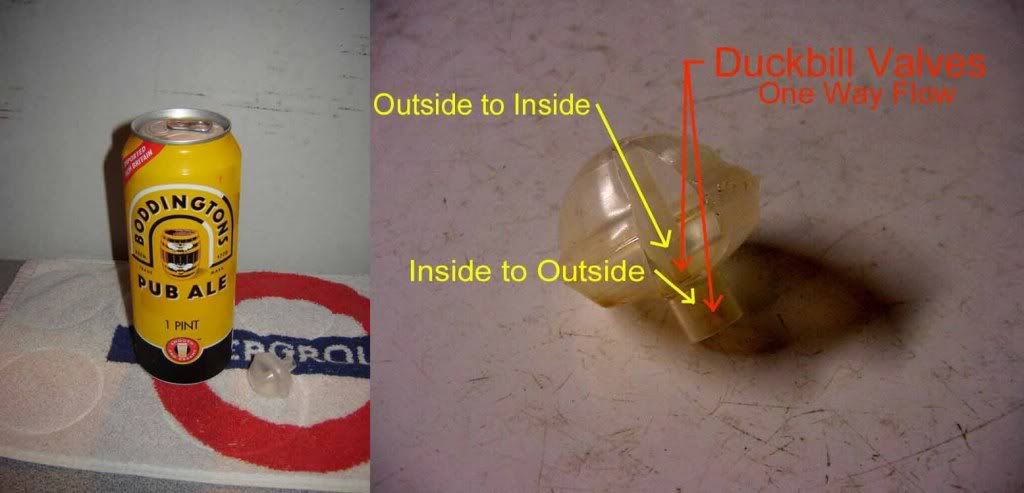While visiting son Tom (the Jones Counter man) I enjoyed a few beers with him. He had laid in a stock of Boddington’s, which we both like. As we were popping the pull-tabs we noticed, as always, the initial “pop” as the pressure was released. This was followed by a few seconds of a hissing noise, accompanied by a fine-bubbled foam. When we had finished our beers we noticed that something was rattling in the cans.
Cutting open a can revealed an ingenious plastic bubble. The bubble is equipped with a pair of duckbill one-way valves. One valve admits flow into the bubble from the outside. The other valve allows flow to exit the bubble.
Field testing revealed that the bubble floats round-side up.
Tom and I could not agree on what was happening. We did agree that when the can was sealed, gas departed the beer into the can’s headspace, pressurizing it. Then opinion diverged.
One of us thinks that the plastic bubble has no initial pressure, and that as gas begins to fill the headspace from the beer, it also enters the bubble. The other opinion is that the bubble initially contains an overcharge of CO2.
Whichever is correct, when the can is opened, the headspace is immediately depressurized. Built-up pressure within the bubble then shoots out of the duckbill valve, adding an agitating stream of fine bubbles, until the bubble is empty.
Can anybody explain this with something better than our two opinions?

